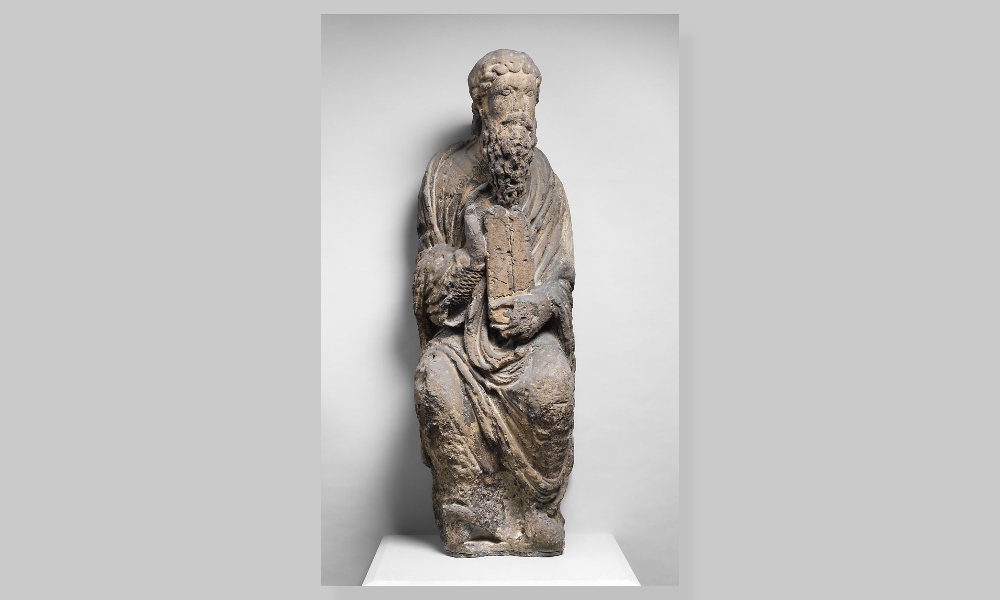“Sculpture of Moses with Tablets of the Law”
ca. 1170, French (limestone, polychromy); once in the Cathedral in Noyon, France, now at the Metropolitan Museum of Art in New York
What did Moses look like? I remember wondering about this when I was a child. It wasn’t hard to envision the infant floating in a basket hidden in the bulrushes, or the boy sitting at the side of Pharaoh’s daughter in the Egyptian court, but it was difficult to imagine the uncanny figure, a kind of wind harp of a man, whom God spoke to and talked through. Biblical narrative says little about his physical appearance besides the extraordinary fact of his age. We’re told that he was 120 when he died and therefore 80 when he led the Jewish people out of Egypt. But what was his face like? Or his body?
Considering episodes of the Bible to be prefigurations of the New Testament, artists in the medieval period, and later in the Renaissance, took the liberty of rendering him in paint or carving him in stone, and they gave him characteristics similar to the French or Italian saints and apostles they grouped him with. Such figures come to us today after having been touched by time, sometimes even mutilated along the way. Strangely their injuries, particularly the damages that happened to statuary, leave behind a verisimilitude, an appearance of being truthful to their essence.
A “Sculpture of Moses with Tablets of the Law,” ca. 1170, which was once in the Cathédrale Notre-Dame de Noyon in France, and is now part of the collection at New York’s Metropolitan Museum of Art, is a good case in point. Carved three-dimensionally but with an unfinished back, the figure still bears the iron ring that once was likely used to secure it to a wall or column. Slightly more slender than life-size, Moses sits on an unadorned stone bench, supporting the tablets with his left hand and making the apparent sign of benediction with his right hand. Though tight curls still frame his face, the effects of acid rain have almost entirely spoiled his features, flattening and eating away at his nose and mouth, mangling his gnarled beard, and leaving a granular and crusty texture along the gathered folds of his draped robe and what’s left of the deteriorated surfaces of his hands. This sculpted Moses was once situated in a portal of a great Gothic cathedral of Noyon, part of a group that included the Virgin holding the baby Jesus, the high priest Aaron (also in the collection of the Met), John the Baptist, and an ancient prophet. Having survived the havoc of the French Revolution, the bombardment of the World War I, the rough treatment of being both rescued and neglected, he is stamped today with his own history and unassailable authenticity, coming as close as is possible to the image in my mind of the lonely man who received the stone tablets on the rocky summit of Mount Sinai.


Any sign of horns?